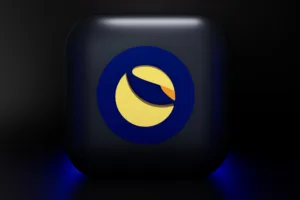Despite the much-anticipated Bitcoin halving, the biggest story in the cryptocurrency world this week was the launch of a new protocol called Runes, created by well-known Bitcoin developer Casey Rodamor. Runes allows users to “etch” and mint tokens directly on the Bitcoin blockchain, similar to Rodamor’s previous project Ordinals, which enabled the inscription of data onto individual satoshis (the smallest unit of bitcoin).
Unlike Ordinals which creates non-fungible tokens (NFTs), Runes functions more like meme coins, a category of tokens that have gained significant popularity recently. The first project to utilize Runes was Rodamor’s own UNCOMMON•GOODS, announced well before the halving, alongside a wave of other projects eager to secure a coveted inscription on the Bitcoin blockchain.
High Fees Suggest Potential for Bitcoin’s Fee Economy
Within just nine blocks of the halving, Runes minters had already paid a staggering 78.6 BTC (roughly $4.95 million) in fees to secure the rarest tokens. This early surge suggests that, like Ordinals, Runes could significantly benefit Bitcoin’s fee economy, a key metric for the network’s health.
The value of a Runes project appears to be subjective, with early movers like DOG•GO•TO•THE•MOON (holding the prestigious title of “Rune Number 3”) commanding a premium. However, “quality” of the ticker symbol also appears to be a major buying factor. According to runebtc.xyz, projects with names like DOG•DOG•DOG•DOG•DOG, MEME•ECONOMICS, SHORT•THE•WORLD, and PEPE•WIT•HONKERS were among the first to be minted.
Uncertain Long-Term Value: Speculation Runs Rampant
Predicting the long-term viability of these projects remains a challenge. “I don’t see any good memes yet,” lamented one trader, expressing hesitation to participate.
Also Read: BlackRock’s Bitcoin ETF Races to the Top, Threatening Grayscale’s GBTC Dominance
Another critical factor is the concept of “pre-mining,” where project creators reserve a portion of tokens for potential future release. Debates raged online regarding the potential impact of pre-mining, with some arguing it benefits projects with strong memes due to the 13-character limit imposed by Runes.
The Future of Runes: Short Names and Strategic Blocking
While the long-term success of this strategy remains uncertain, data from Ordiscan reveals a developer has already blocked a series of future tickers, including ZZZZ (the first four-letter Rune in two years) and even single-letter tickers like A (the last single-character Rune to be minted).
With a nascent protocol like Runes, the concept of value itself is fluid. As X Space host Leonidas summarized, “This is essentially the start of a completely new protocol…let’s see what happens. I think it’s going to be very chaotic.”



